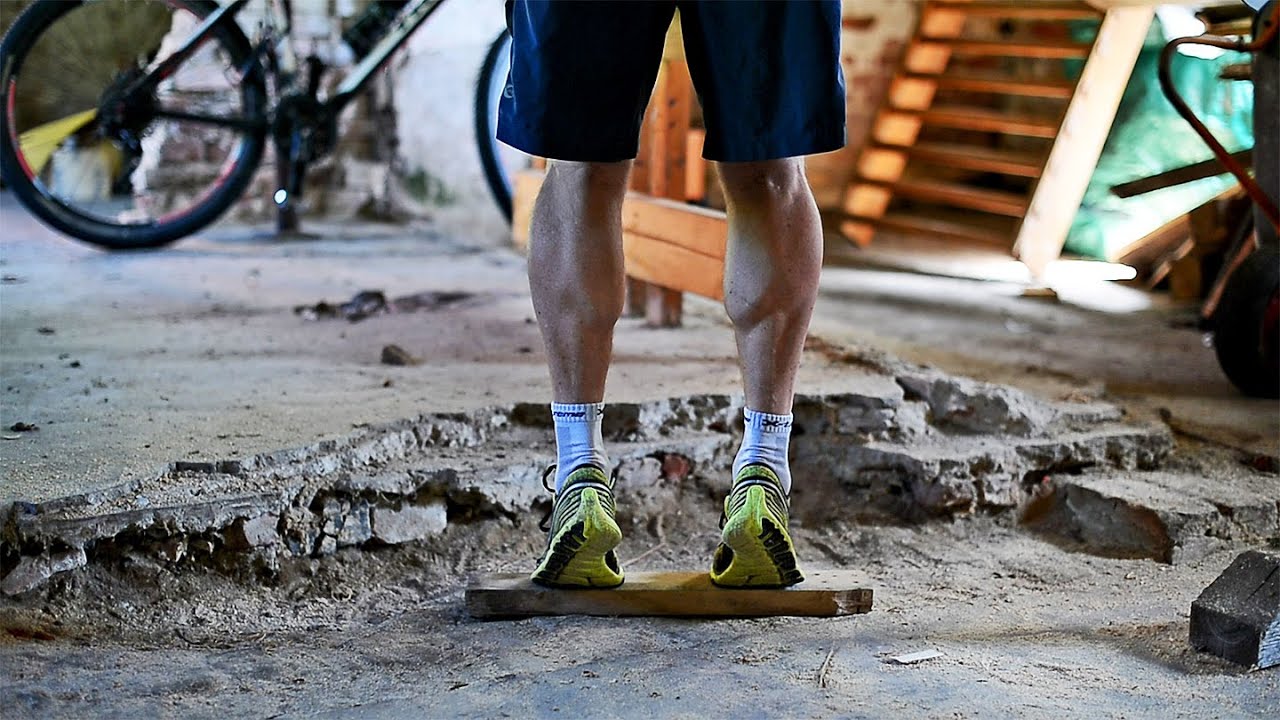
The main bulk of the calf is composed by the gastrocnemius muscle, a muscle which has two heads; the outer lateral head and the inner medial head. The flat soleus muscle runs beneath the larger gastrocnemius, with the soleus most active when the ankle is extended with a significant bend in the knee. The gastrocnemius is the primary recruiter when the ankle is extended with no significant bend in the knee, and therefore the gastrocnemius is involved in many activities such as walking, running, cycling, jumping, and many other movements. Due to the calf muscles being continuously active, shortening and tightness of the calf is common. Below are some calf stretches which can help reduce tightness and increase recovery.
Wall calf stretch
Standing a few feet away from a wall, place one foot forward, and bend the knee of the front leg slightly. Bending the front knee to a greater extent and leaning forward towards the wall so the hips move forward, whilst the heels of both feet remain planted to the ground, will supply a stretch to the calf muscle of the rear leg.
Maintain this stretch for 20 seconds. Repeat for the other leg.
Seated soleus stretch
Sit with both legs outstretched in front, with the torso erect. Bring one foot towards the buttocks, so the knee is bent at a right angle, with the heel firmly planted on the floor. From this position bring the foot towards the front of the calf, whilst the heel remains stationary and routed to the floor, by pulling with your hands.
Maintain this stretch for 20 seconds. Repeat for the other leg.
Step calf stretch
Find a raised platform, such as the bottom step of a staircase. Place both feet onto the raised platform, with the toes on the edge of the platform and the arches and heels of the feet overhanging the edge. From this position descend downwards so the heels are lower than the platform and the calfs are stretched.
Maintain this stretch for 20 seconds.
The above stretches are great for those who experience tight calf muscles, with people who wear high heeled shoes or those continuously on their feet commonly experiencing issues. Stretching the calf muscles after exercise is also beneficial, with many trainers reporting improved recovery from regular post workout stretching.
Fascia calf stretching is often a practice of experienced bodybuilders, with the calf muscles often stubborn in responding to the exercises with the aim of muscle hypertrophy. Many believe the tight sack which surrounds the muscle, the muscle fascia, is responsible for the a less than optimal rate of hypertrophy, and by stretching the fascia it is possible to reduce the constrictiveness to improve muscle growth. Performing high repetition calf raises to encourage a pronounced pump and swelling of the muscle is often followed by intense calf stretches, such the ones listed above, to attempt to the stretch the muscle fascia.